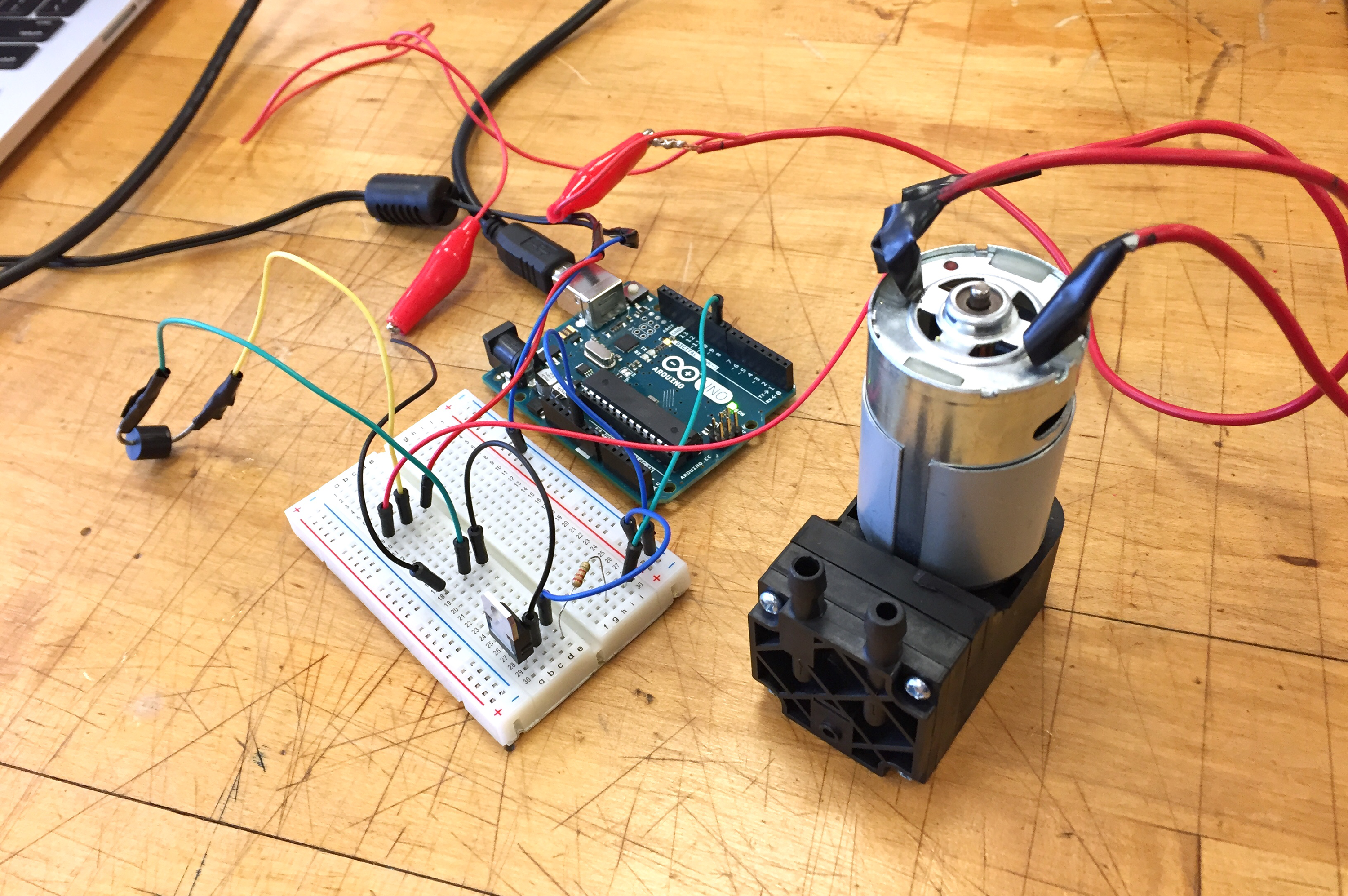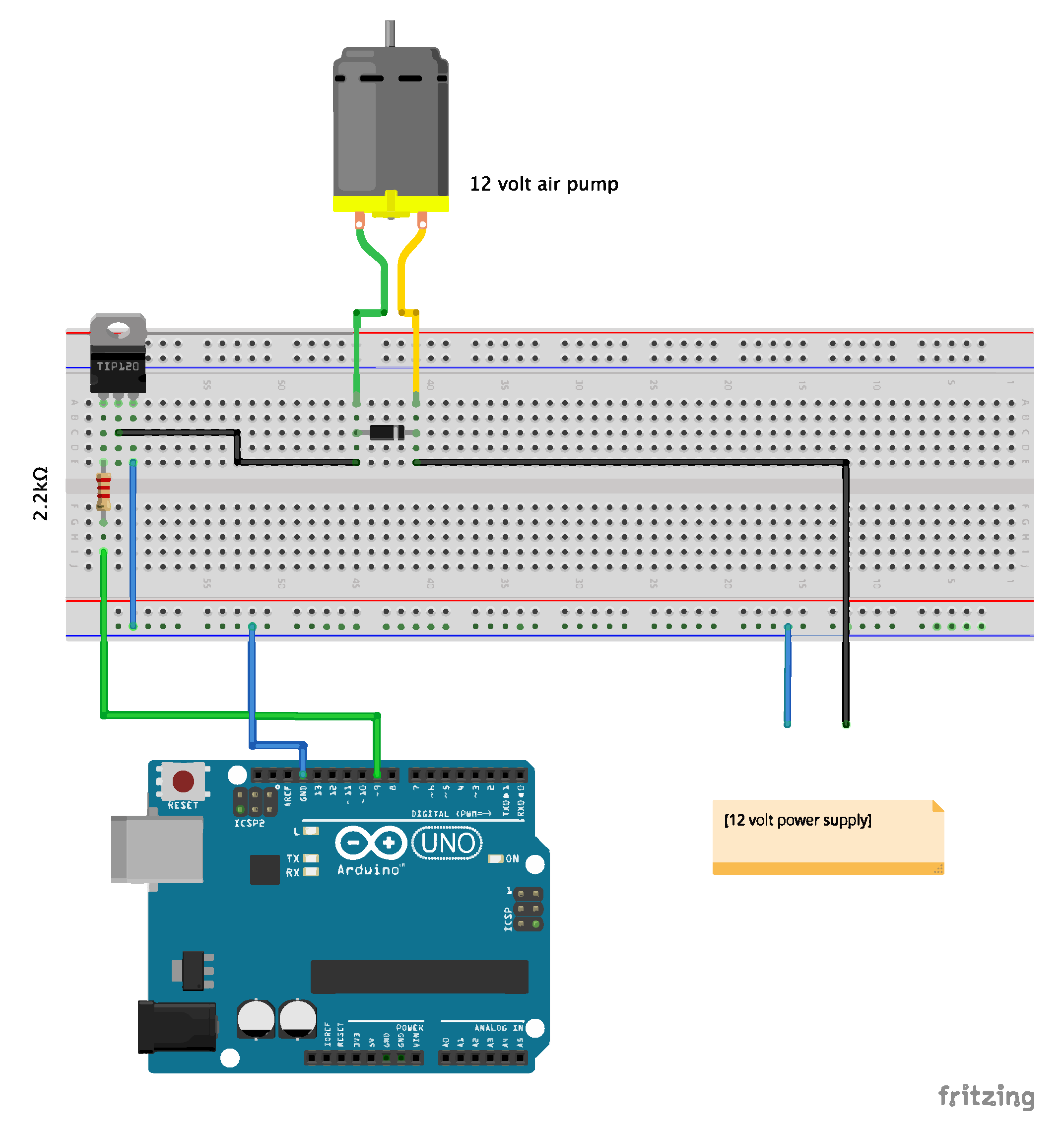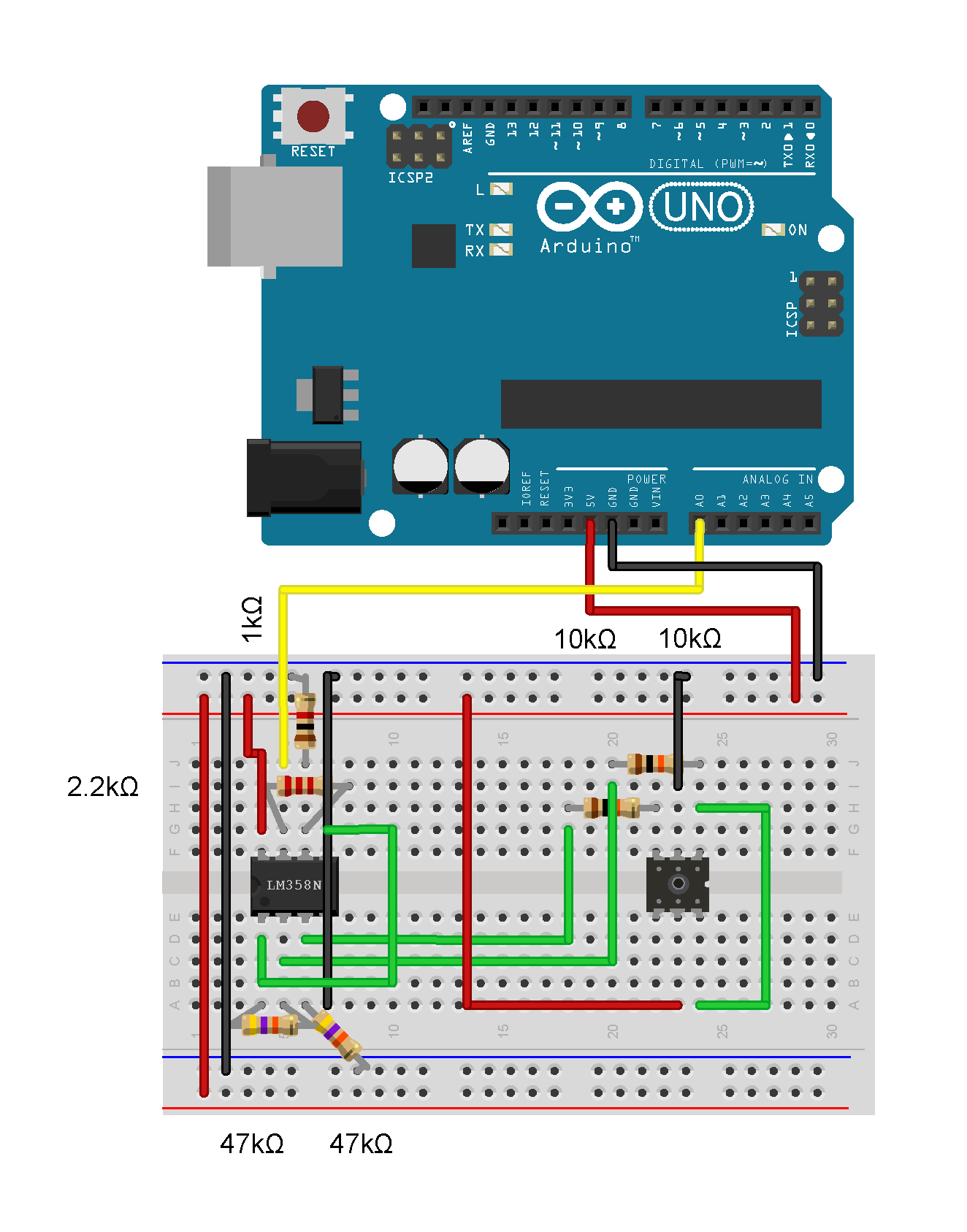
Prototype with me:
DIY inflatables with electric pumps and vinyl
The seed for this project was the idea of designing inflatable floating architecture. I do summer as an architecture tour guide on the Chicago River, after all. I decided to invite along anyone who wants join me on the journey, via YouTube. Keep reading to follow where the adventure takes us, as well as how to recreate the technologies I use. And, as they say on YouTube, please like and subscribe!
Part One
Join me as I experiment with vinyl cement and test whether it's a reliable method of creating a leak-free little inflatable dumpling.
Part Two
Can my little inflatable "dumplings" bend and fold and form complex shapes?
Simple on/off circuit
int pump = 9;
void setup() {
pinMode(pump, OUTPUT);
}
void loop() {
digitalWrite(pump, HIGH);
}
Biomimetic loop example
int pump = 9;
void setup() {
pinMode(pump, OUTPUT);
}
void loop() {
for(int i=50; i<255; i=i+20){
analogWrite(pump, i);
delay(200);
}
for(int i=255; i>50; i=i-20){
analogWrite(pump, i);
delay(200);
}
}
Part Three
Let's look at both digital and analog controls for the pump, different inflation behaviors, and blow stuff up til it breaks.
PRESSURE SENSOR RESOURCES
Pressure sensor (Amazon) Pressure sensor exploration blog documentation Pressure sensor datasheet Helpful science teacher's video about the air pressure science of an exploding balloon
Part Four
How do pressure sensors work? More importantly, how does air pressure work? My struggles and learnings through failure, on display for your viewing pleasure.
Part Five
Let's build something BIG. What starts out as a raft turns into a giant saddle shape: the hyperbolic parabaloid. Also, I model some weird looks.
Part Six
Inspired by my giant sun hat from the previous week, I set out to make a wig out of a bright yellow shower curtain. I also test a new glue: Gorilla PVC Glue.
Part Seven
In which I make a much larger wig, to test developable geometries-- in other words, layers of flat material that inflate into more complex shapes. I also try to get better at Gorilla PVC Glue... and fail.
Part Eight
Do I really need vinyl cement to prototype inflatables? Can I use heat sealing tools that are way less noxious?
REFERENCES AND CREDIT
Useful information for high-power circuits at bildr.org MIT's Aeromorphs project video inspired forms for my early prototypes Rich discussion in the comments of this DIY Inflatable Boat instructable DIY inflatable raft kit, the Packraft, which uses heat sealing DIY inflatable + folding kayak plans Kengo Kuma's inflatable tea house is an inspiring example of inflatable architecture This very ridiculous video of a man spending the night in a zorb ball on a pond might be worth your time

